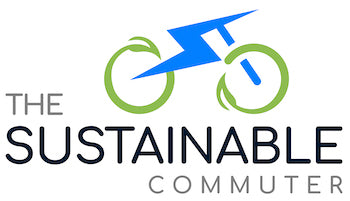
Discovering the World of Electric Scooters: Benefits, Risks, and Charging Tips
Share
Electric scooters and e-bikes have been gaining popularity as convenient and eco-friendly modes of transportation in recent years. They offer several benefits over traditional gasoline-powered vehicles, such as reduced emissions, cost-effectiveness, and convenience. However, like any mode of transportation, they also come with some risks and challenges, such as potential accidents and injuries.
In this blog post, we will explore the world of electric scooters and e-bikes in depth, including their benefits, risks, and charging tips, who should use them, and what the future holds for this innovative mode of transportation.
Benefits of Electric Scooters
Electric scooters offer several benefits over traditional gasoline-powered vehicles, including environmental, cost, and convenience benefits.
Environmental Benefits
One of the most significant benefits of electric scooters is their reduced environmental impact. Unlike gasoline-powered vehicles, electric scooters produce no direct emissions, which can help to reduce air pollution and greenhouse gas emissions. They also use energy more efficiently, converting a higher percentage of their energy input into motion.
In addition, many electric scooters are made with sustainable materials, such as recycled plastic and aluminum, which can help to reduce the environmental impact of manufacturing.
Cost Benefits
Electric scooters are also cost-effective in terms of purchase and maintenance costs. They are generally less expensive to purchase than traditional vehicles and require less maintenance, which can save money in the long run. In addition, the cost of charging an electric scooter is usually much lower than the cost of fueling a traditional vehicle, making it a more affordable option for daily use.
Convenience Benefits
Electric scooters are typically smaller and more lightweight than traditional vehicles, making them easier to store, park, and maneuver through traffic. They also offer reduced parking challenges, as they can often be parked in smaller spaces. Electric scooters offer commuters a fast and efficient way to travel short distances without the hassle of parking and traffic.
Risks and Challenges of Electric Scooters
While electric scooters offer many benefits, they can come with risks and challenges. Some potential dangers include collisions, injuries, mechanical failure, and rider error. However, ways to prevent accidents and injuries include wearing appropriate safety gear, following traffic laws, and regular maintenance.
Preventing Accidents and Injuries
It's crucial to try and prevent accidents and injuries while using an electric scooter, follow basic safety guidelines and ride responsibly. This includes wearing appropriate safety gear, such as a helmet and pads, following traffic laws, and staying aware of your surroundings. Regular maintenance and inspections can also help to prevent mechanical failures.
Charging Electric Scooters
Electric scooters are typically charged by plugging them into an electrical outlet, using a charging cable that comes with the device. Charging costs are typically lower than the cost of fueling a traditional vehicle, and solar-powered options are also available. It's essential to follow the manufacturer's charging time recommendations and avoid overcharging the battery, as this can shorten its lifespan.
Cost of Charging
The cost of charging an electric scooter can vary depending on several factors, such as the cost of electricity in your area, the capacity of the battery, and how often you use the device. However, in general, the cost of charging an electric scooter is significantly lower than the cost of filling up a gas tank for a traditional vehicle. To calculate the cost of charging an electric scooter, you can use the following formula:
Cost of charging = (battery capacity in kWh) x (electricity cost per kWh)
For example, if your electric scooter has a battery capacity of 0.5 kWh and the cost of electricity in your area is $0.15 per kWh, the cost of charging your device would be:
Cost of charging = 0.5 kWh x $0.15/kWh = $0.075
This means that it would cost $0.075, or less than 8 cents, to charge your device fully.
Solar-Powered Options
Solar-powered options are also available for electric scooters. These devices use solar panels to capture energy from the sun and convert it into electricity to charge the battery. Solar-powered electric scooters can be more environmentally friendly and cost-effective than traditional ones, using renewable energy to charge the battery.
However, it's important to note that solar-powered options may not be as efficient as traditional charging methods and may not be practical in areas with limited sunlight. Additionally, solar-powered electric scooters may be more expensive than traditional ones.
Who Should Use Electric Scooters
Electric scooters are good for commuters, urban dwellers, older adults, students, and recreational riders. They may not be suitable for longer commutes or for transporting large items or groups of people.
Commuters
Electric scooters offer commuters a fast and efficient way to travel short distances without the hassle of parking and traffic. They are also cost-effective, requiring less fuel and maintenance than traditional vehicles.
Urban Dwellers
Electric scooters are a convenient way for urban dwellers to get around crowded cities without needing a car. They are easy to store, park, and maneuver through traffic, making them a great choice for city living.
Older Adults For older adults, electric scooters can be a practical and efficient mode of transportation. They are easy to use and offer a more stable and comfortable ride than traditional bicycles.
Students
Electric scooters are a fun and convenient way for students to get around campus or to nearby destinations. They are also cost-effective and environmentally friendly, making them a great choice for college students on a budget.
Recreational Riders
Electric scooters can offer recreational riders a unique and exciting way to explore new places. They are also more environmentally friendly than traditional ATVs or dirt bikes, making them a great choice for outdoor enthusiasts who want to minimize their environmental impact.
Future of Electric Scooters
The future of electric scooters and e-bikes looks bright, with continued innovation and improved battery technology, design, and safety features. Electric scooters will likely become even more popular as more people look for eco-friendly and cost-effective transportation options.
Final Thoughts
Electric scooters and e-bikes offer many benefits over traditional gasoline-powered vehicles, including reduced environmental impact, cost-effectiveness, and convenience. However, they come with risks and challenges, such as potential accidents and injuries. By following basic safety guidelines and responsible riding practices, electric scooters can be a safe and convenient mode of transportation for various users.
